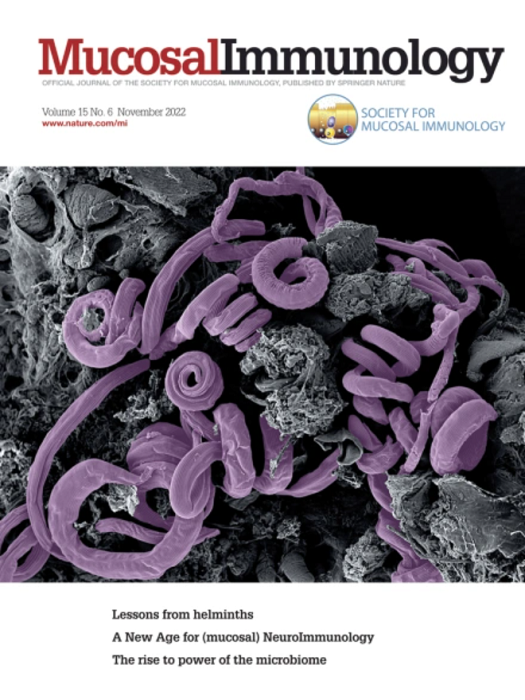Memory T cell formation and phenotype varies across intestinal compartments
IF 7.6
2区 医学
Q1 IMMUNOLOGY
引用次数: 0
Abstract
Numerous studies have shown that tissue-resident memory T (TRM) cells form in the intestine following pathogen clearance. However, most knowledge of intestinal TRM cells has derived from analyses restricted to the small intestine (SI). In contrast, less is known about TRM cell formation in the large intestine (LI). Here, we compared the abundance and phenotype of memory T cells across intestinal compartments. Using mouse models of infection, we observed that fewer memory T cells formed in the LI compared to the SI. Moreover, we found that T cells in the epithelium and lamina propria of the LI colon and caecum were phenotypically distinct from SI counterparts, comprising Ly6C-expressing CD8+ TRM cells with a distinct cytokine and granzyme profile. Using both loss- and gain-of-function approaches, we identified site-specific TGF-β dependencies, whereby Ly6C+CD103- TRM cells developed independently of TGF-β in both the SI and LI. In contrast, augmenting TGF-β signalling preferentially expanded Ly6C− TRM populations in the LI but not the SI, indicating that TGF-β signalling drives TRM cell heterogeneity between these compartments. Together, these findings underscore how regional differences in TRM cell responsiveness to local cues shape their development, phenotype, and function along the gastrointestinal tract.
记忆T细胞的形成和表型在不同的肠室中是不同的。
大量研究表明,组织驻留记忆T (TRM)细胞在病原体清除后在肠道中形成。然而,大多数关于肠道TRM细胞的知识来自于仅限于小肠(SI)的分析。相比之下,人们对大肠(LI)中TRM细胞的形成知之甚少。在这里,我们比较了肠道间室中记忆T细胞的丰度和表型。使用小鼠感染模型,我们观察到LI中形成的记忆T细胞比SI中形成的记忆T细胞少。此外,我们发现LI结肠和盲肠上皮和固有层中的T细胞在表型上与SI的对应细胞不同,包括表达ly6c的CD8+ TRM细胞,具有不同的细胞因子和颗粒酶谱。使用功能丧失和功能获得的方法,我们确定了位点特异性TGF-β依赖性,即Ly6C+CD103- TRM细胞在SI和LI中独立于TGF-β发育。相比之下,增加TGF-β信号传导优先扩大LI而非SI中的ly6c - trm种群,这表明TGF-β信号传导驱动了这些区室之间的trmccell异质性。总之,这些发现强调了TRM细胞对局部信号反应的区域差异如何影响它们在胃肠道中的发育、表型和功能。
本文章由计算机程序翻译,如有差异,请以英文原文为准。
求助全文
约1分钟内获得全文
求助全文
来源期刊

Mucosal Immunology
医学-免疫学
CiteScore
16.60
自引率
3.80%
发文量
100
审稿时长
12 days
期刊介绍:
Mucosal Immunology, the official publication of the Society of Mucosal Immunology (SMI), serves as a forum for both basic and clinical scientists to discuss immunity and inflammation involving mucosal tissues. It covers gastrointestinal, pulmonary, nasopharyngeal, oral, ocular, and genitourinary immunology through original research articles, scholarly reviews, commentaries, editorials, and letters. The journal gives equal consideration to basic, translational, and clinical studies and also serves as a primary communication channel for the SMI governing board and its members, featuring society news, meeting announcements, policy discussions, and job/training opportunities advertisements.
 求助内容:
求助内容: 应助结果提醒方式:
应助结果提醒方式:


